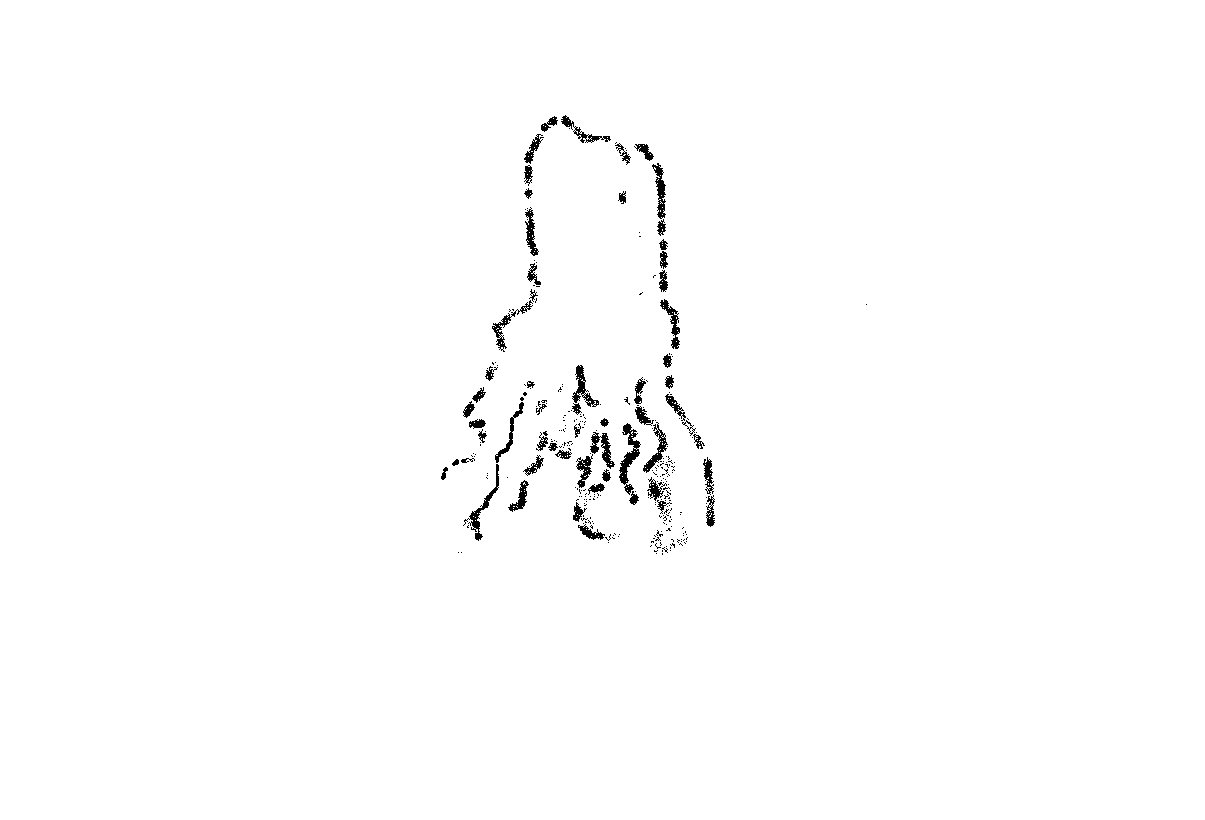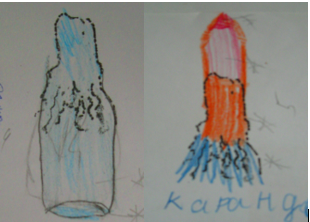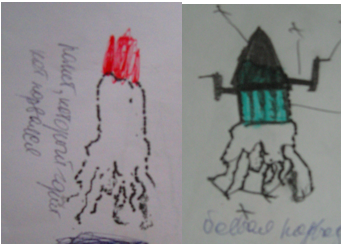Abstract
This article presents research results of comparative study of the divergent creativity in intellectually gifted children and gifted children in art. The study is focused on answering the question whether the creativity of intellectually gifted children of 7-8 years differs from creativity of their peers gifted in art, are there any peculiarities of creativity in verbal and graphical domains? Torrance Tests of Creative Thinking (TTCT, Figural form A) and author’s instrument for creativity assessment (VFCT) in verbal and figural domain of activity were used to derive data from the children. The total of 69 primary school students (52 - intellectually gifted and 17 - gifted in art, aged of 7.5) participated in the research. The results showed that particularities of creativity depend on the domain of giftedness of the child. The creativity of the children gifted in art was manifested mainly in the figural task, while in their intellectually gifted peers - in the verbal task. The results obtained in study show as main quantity so the quality differences in the manifestation of creativity between intellectually gifted children and gifted children in art. If the children’s drawings gifted in art show their aesthetical relation to the world, intellectually gifted children’s drawings as their guesses reveal the “playing mind” with many objects, ideas and fantastic combinations.
Keywords: Creativitygifted children in artintellectually gifted children
Introduction
Among the significant problems of modern school education, the improving creativity in children takes its peculiar place. Creativity has been viewed in modern society as an important characteristic for professional success and personal development. The majority of authors think that creativity is an important component for giftedness. Although the definition of creativity is under discussion up to now many authors consider that creativity can be defined as the capacity to produce something new and adaptive within the constraints of a given situation (Lubart, Mouchiroud, Tordjman & Zenasni, 2003). Thus a creative production must be original, at least to some extent.
Recent studies indicate that creativity is partly domain general but mainly domain specific (Baer, 1999; Lubart & Guignard, 2004; Besançon & Lubart, 2008). Thus, creative abilities can differ depending on the field. Being creative in verbal tasks, a child can have difficulties making an original drawing. Researches show that early identification of creative potential is an important condition for its further development. It’s underlined that to understand the specific developmental “trajectories in different fields is critical so that windows of opportunity for talent development are not missed” (Subotnik, 2011, p.39). Actually we have limited the amount of information about the special features of creativity in the primary school children gifted in different spheres. Thus the characteristics of intellectually or academically gifted primary school children have been investigated much better than primary school children gifted in art. It concerns the special features of creativity of these children. At the same time, the study of this question has not only the theoretical, but also a practical value, connected with the expansion of possibilities and the refinement of assessment set of instruments for the revealing creative potential of children for further development their giftedness.
Problem Statement
The present study is based on two main concepts. First, is the concept of creativity according to which the divergent productivity and ability to sense problems are understood as abilities dealing with creative thinking (Torrance, 1988; Matyushkin, 2003). Second, is the suggestion that creativity is partly domain specific, so it is important that measures of creative potential take into account the domain of creative expression (Barbot, Besançon and Lubart, 2011). In order to understand the special features of creativity of intellectually gifted primary school children and primary school children gifted in art it is necessary to use at least verbal and graphical divergent tasks and to compare their creative expression in different domains. We assumed that different types of the primary school children’s giftedness can be manifested in the specific characteristics of creativity.
Research Questions
This research is focused on answering the question whether the creativity of intellectually gifted children of 7-8 years differs from creativity of their peers gifted in art? What are peculiarities of creative thinking of intellectually gifted children and children gifted in art with the fulfillment of assignments for the divergent productivity?
Purpose of the Study
The purpose of this study was to explore the specifics of the creativity of the primary school children gifted in art and compare to intellectually gifted children revealed by using divergent tasks in verbal and graphical domains.
Research Methods
The study sample included 69 primary school students (52 - intellectually gifted and 17 - gifted in art aged 7-8 years) educated in the first grade of the Russian schools and selected by testing among 137 primary school students.
To assess the level of intellectual giftedness and potential child’s giftedness in art the following methods were used:
-
Method of Express Diagnostic of Intellectual Abilities (MEDIS) was used to assess the level of intelligence. MEDIS is the short version of the Kognitive Fahigkeits Tests (KFT, Heller, 1985) which was adapted for Russian first grade students (Shcheblanova & Averina, 1994). MEDIS includes four subtests with 5 tasks in each (verbal, arithmetic, word matching, and abstract problem solving questions) represented to children in form of pictures. Primary school children demonstrated the result in upper quartile have been included in intellectually gifted group (IG group, n=52; 24 boys, 28 - girls).
-
For revealing primary school students gifted in art, the special tasks “Line of horizon” and “Description of object”, proposed by Melik-Pashaev (Melik-Pashaev, 2015) were used. In terms of procedures proposed by the author, potential child’s giftedness in art is manifested in two basic aspects: aesthetical relation to the world and author's activity. Fulfillment of assignments does not require any special knowledge or depictive skills above all of accessible level. Principally important is that, how the task is carried out: it is carried out formally, in accordance with the instruction or the child introduces in the work the elements of artistic expressiveness. The presence and the degree of the manifestation of expressiveness are evaluated by expert evaluation. Two independent experts evaluated children's works. On the basis expert estimations it was formed the group of 17 the children (10 girls, 7 boys) - primary school children gifted in art (AG group).
To evaluate the potential of creativity the following methods were used:
Torrance Tests of Creative Thinking (TTCT, Figural form A; Torrance, 1974) was used to study the level and specifics of the creativity of the primary school children gifted in different domain. This test largely measures divergent thinking. Besides, a special instrument for creativity assessment “Verbal and Figural Creativity” (VFCT) has been designed to measure creativity in verbal and figural domain of activity. Two divergent thinking tasks were used: verbal and figural:
Guesses. The children were showed the ambiguous figure and asked to make up as many different hypotheses of what it might have be as they could (Fig.
01 ). The time for guessing was unlimited.

Drawings. After the first part (Guesses) the children were asked to draw as many pictures as they could use these very figures. The children were provided with five sheets of paper. On each, six of the same ambiguous figures were presented. The time for drawing was unlimited. In the end (when the child did not have any more ideas), the child was asked to give a title to each picture.
The study used the following methods of mathematical statistics: descriptive statistics, Student t-test.
Findings
Independent samples t-tests indicated mean differences on different indices of creativity between the two groups of the gifted children. Table
The similar results were received in case of applying the test “Verbal and Figural Creativity” (VFCT). Children gifted in art demonstrated higher scores of figural creativity and significantly higher fluency score in subtest "Drawings". At the same time independent samples t-tests indicated significantly higher scores of verbal fluency, originality and verbal general creativity score in IG group to compare to AG group (subtest “Guesses”). Table

The qualitative analysis of the obtained results is very important. The analysis of the task “Drawing” showed that the children gifted in art attempt to personify the images to make them close to the real life. Their figures are characterized by completeness, smoothness of lines, polychromic and emotional expressiveness. They try to create pictures in most complete agreement with their own concept. The children manifested persistence in search of a pencil or necessary colour felt-tip pen; they did not hurry to complete the drawing. The intellectually gifted children, as a rule, carry out drawing tasks more rapidly than their artistically gifted peers, using pencils or felt-tip pens, which were at hand. In their pictures they represent a lot of different objects. The lines are characterized by sketchiness and the suddenness. They prefer to schematically outline unusual idea, but not to depict it. They like to create the fantastic and unreal subjects, metaphorical images. They are inclined to give unusual names for their most usual pictures. There are the examples of drawings from each group: Fig.

The qualitative analysis of the Guesses shows that the children in gifted art are not inclined to put the original hypotheses. They don’t abstract from the ambiguous figure and as a result their hypotheses are maximally close to the reality. This special feature of the hypotheses is, possibly, caused by the manifestation of their aesthetical relation to the world. The hypotheses of their intellectually gifted peers are, on the contrary, characterized by originality. As a rule, they are rapidly and easily abstracted from the ambiguous figure and create fantastic and unusual objects. There are the examples of the guesses for each group in the Table
Conclusion
The study displayed the specificity of the manifestation of creativity of children gifted in different domains at the beginning of the schooling - at age 7. Creativity of intellectually gifted children of 7-8 years differs from creativity of their peers gifted in art. The results showed that the creativity of the children gifted in art was manifested mainly in the figural task, while in their intellectually gifted peers - in the verbal task. The intellectually gifted children easily produce diverse ideas in the verbal plan, which leads to their high verbal fluency and originality in comparison with their peers gifted in art. The children gifted in art focus on the ambiguous figure, reviving and spiritualizing it, which leads to high figural fluency, originality and the elaboration. The results obtained in study show the quality differences in the manifestation of creativity between intellectually gifted children and children gifted in art. If the children gifted in art showed their aesthetical relation to the world in their drawings, intellectually gifted children depicted their guesses revealing the “playing mind” with many objects, ideas and fantastic combinations. The results indicate the complex creativity assessment in primary school students. The particularities of creativity depend on the domain of giftedness of the child. The problem of the gender differences in the manifestation of creativity of children gifted in different domains and its changes in different age require more detailed research and consideration in future.
Acknowledgments
The author is very grateful to E.A. Ryzhova, masters degree candidate, for her assistance in gathering data.
References
- Baer, J. (1999). Domains of creativity. In M.A. Runco & S.R. Pritzker (Eds.), Encyclopedia of creativity (pp. 591−596). San Diego, California: Academic Press.
- Barbot. B., Besançon, M. & Lubart, T. (2011). Assessing Creativity in the Classroom. The Open Education Journal, 4,(Suppl 2:M5), 124-132.
- Besançon, M., & Lubart, T. (2008). Differences in the development of creative competencies in children schooled in diverse learning environments. Learning and individual differences, 18(4), 381- 390.
- Lubart, T., & Guignard, J.H. (2004). The generality–specificity of creativity: A multivariate approach. In E.L. Grigorenko & R.J. Sternberg (Eds.), Creativity: From potential to realization (pp. 43−56). Washington, DC, US: American Psychological Association.
- Lubart, T., Mouchiroud, C., Tordjman, S., & Zenasni, F. (2003). Psychologie de la créativité. Paris: Armand Colin.
- Matyushkin, A.M. (2003). Myshlenie. Obuchenie. Tvorchestvo. Moskva: Moskovskij psihologo-social'nyj institute.
- Melik-Pashaev, A.A. (2015). Principy diagnostiki hudozhestvennogo razvitiya. Psihologiya obucheniya, 10, 34-46.
- Shcheblanova, E.I., Averina, I.S.& Zadorina, E.N. (1994). Metodika ehkspress-diagnostiki intellektual'nyh sposobnostej detej 6-7 let. Voprosy psihologii, 4, 143-146.
- Subotnik, R.F., Olszewski-Kubilius Paula & Worrell Frank C. (2011). Rethinking Giftedness and Gifted Education: A Proposed Direction Forward Based on Psychological Science. Psychological Science in the Public Interest, 12(1), 3–54.
- Torrance, E.P. (1988). The nature of creativity as manifest in its testing. In R.J.Sternberg (Ed.), The nature of creativity (pp. 43-75). New York, Cambridge University Press.
Copyright information

This work is licensed under a Creative Commons Attribution-NonCommercial-NoDerivatives 4.0 International License.
About this article
Publication Date
23 November 2018
Article Doi
eBook ISBN
978-1-80296-048-8
Publisher
Future Academy
Volume
49
Print ISBN (optional)
-
Edition Number
1st Edition
Pages
1-840
Subjects
Educational psychology, child psychology, developmental psychology, cognitive psychology
Cite this article as:
Shumakova, N. (2018). Creativity In Intellectually Gifted Primary School Children And Gifted Children In Art. In S. Malykh, & E. Nikulchev (Eds.), Psychology and Education - ICPE 2018, vol 49. European Proceedings of Social and Behavioural Sciences (pp. 629-635). Future Academy. https://doi.org/10.15405/epsbs.2018.11.02.72

